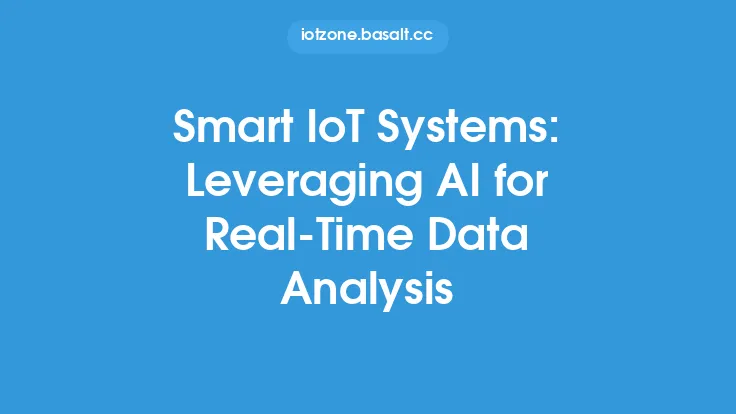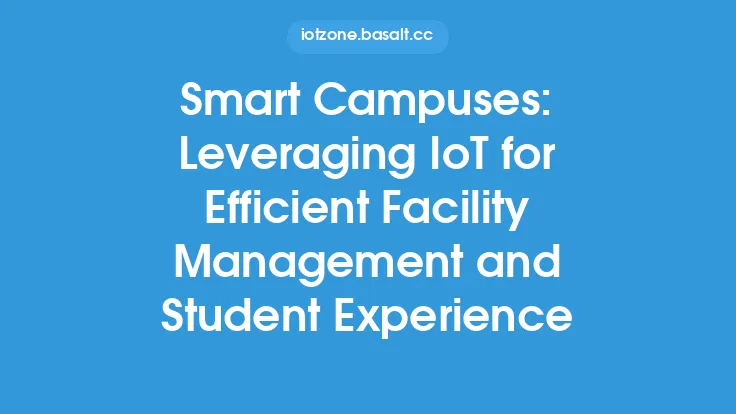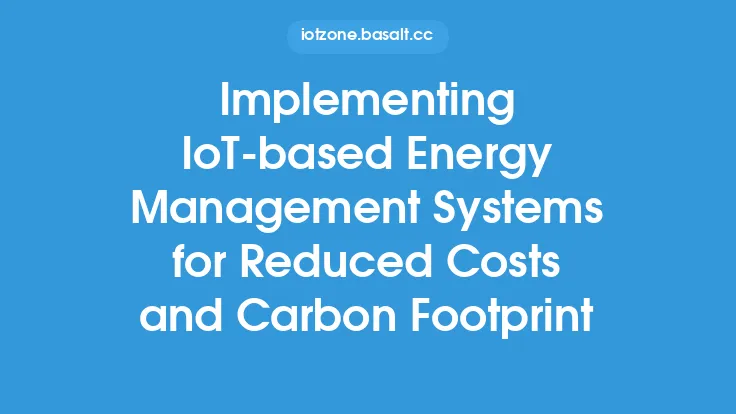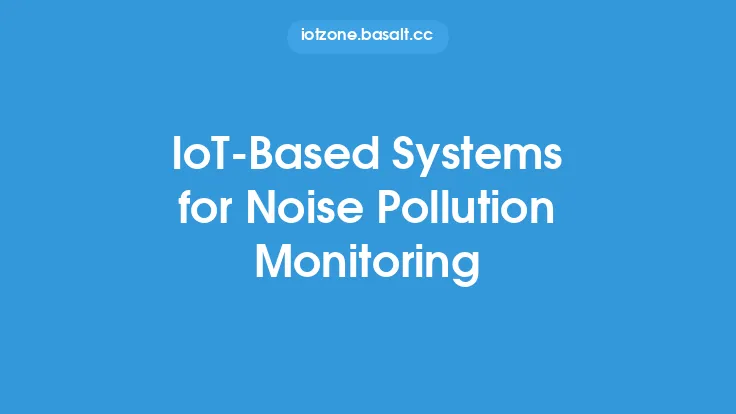The world is facing numerous environmental challenges, including climate change, pollution, and conservation of natural resources. To address these issues, it is essential to have a comprehensive understanding of the environment and the impact of human activities on it. This is where smart environmental monitoring systems come into play, leveraging the power of the Internet of Things (IoT) to create a more sustainable and greener future.
Introduction to IoT in Environmental Monitoring
IoT technology has revolutionized the way we monitor and manage the environment. By deploying a network of sensors and devices, IoT enables real-time monitoring of various environmental parameters, such as temperature, humidity, air quality, and noise pollution. This data is then transmitted to a central server or cloud platform, where it can be analyzed and used to make informed decisions. The use of IoT in environmental monitoring has numerous benefits, including improved accuracy, increased efficiency, and enhanced decision-making capabilities.
Key Components of Smart Environmental Monitoring Systems
A smart environmental monitoring system typically consists of several key components, including sensors, communication protocols, data analytics, and visualization tools. Sensors are used to collect data on various environmental parameters, such as air quality, water quality, and soil moisture. Communication protocols, such as Wi-Fi, Bluetooth, and cellular networks, are used to transmit data from sensors to a central server or cloud platform. Data analytics tools are used to analyze the collected data and identify trends and patterns. Visualization tools, such as dashboards and maps, are used to present the data in a user-friendly format, making it easier to understand and interpret.
IoT Protocols and Technologies for Environmental Monitoring
Several IoT protocols and technologies are used in environmental monitoring, including LoRaWAN, Sigfox, and NB-IoT. These protocols offer low power consumption, long range, and high capacity, making them ideal for environmental monitoring applications. Other technologies, such as machine learning and artificial intelligence, are also used to analyze and interpret the collected data. For example, machine learning algorithms can be used to identify patterns in air quality data and predict future trends.
Data Management and Analytics in Environmental Monitoring
Effective data management and analytics are critical components of smart environmental monitoring systems. The collected data must be stored, processed, and analyzed to extract meaningful insights. This can be achieved using various data analytics tools, such as cloud-based platforms, data warehouses, and business intelligence software. Data visualization tools, such as dashboards and reports, are used to present the data in a user-friendly format, making it easier to understand and interpret.
Security Considerations in IoT-Based Environmental Monitoring
Security is a critical consideration in IoT-based environmental monitoring systems. The use of IoT devices and sensors can create new security risks, such as data breaches and device tampering. To mitigate these risks, it is essential to implement robust security measures, such as encryption, authentication, and access control. Secure communication protocols, such as HTTPS and CoAP, can be used to protect data transmission between devices and the cloud. Regular software updates and patching can also help to prevent device vulnerabilities.
Real-World Applications of Smart Environmental Monitoring Systems
Smart environmental monitoring systems have numerous real-world applications, including monitoring of air quality, water quality, and soil moisture. These systems can be used to monitor and manage environmental parameters in various settings, such as cities, industries, and agricultural fields. For example, a smart environmental monitoring system can be used to monitor air quality in a city and provide real-time alerts to citizens when the air quality exceeds safe limits. Similarly, a system can be used to monitor soil moisture in an agricultural field and provide farmers with real-time data to optimize irrigation and crop management.
Challenges and Limitations of Smart Environmental Monitoring Systems
While smart environmental monitoring systems offer numerous benefits, there are also several challenges and limitations to their adoption. One of the major challenges is the high upfront cost of deploying and maintaining these systems. Additionally, the lack of standardization and interoperability between different IoT devices and platforms can create integration challenges. Other challenges include ensuring data quality and accuracy, addressing security concerns, and providing reliable and efficient data transmission.
Future Directions and Opportunities
The future of smart environmental monitoring systems looks promising, with numerous opportunities for growth and innovation. The increasing adoption of IoT technology, advancements in data analytics and machine learning, and the growing demand for sustainable and environmentally friendly solutions are driving the development of these systems. Future directions include the integration of emerging technologies, such as blockchain and edge computing, to enhance security, efficiency, and decision-making capabilities. Additionally, the development of more affordable and accessible solutions can help to increase the adoption of smart environmental monitoring systems in various settings and industries.
Conclusion
Smart environmental monitoring systems, powered by IoT technology, offer a powerful tool for creating a more sustainable and greener future. By providing real-time monitoring and data analytics, these systems can help to identify and mitigate environmental challenges, such as pollution and climate change. While there are challenges and limitations to their adoption, the benefits and opportunities offered by these systems make them an essential component of any environmental management strategy. As the world continues to urbanize and industrialize, the need for smart environmental monitoring systems will only continue to grow, driving innovation and adoption in the years to come.





